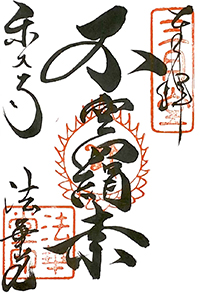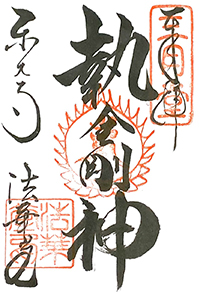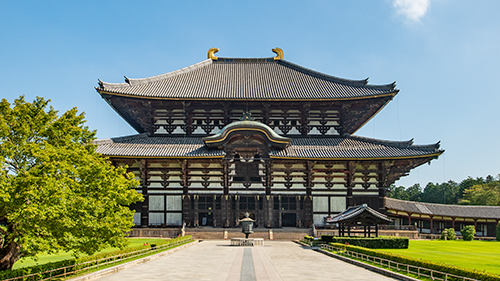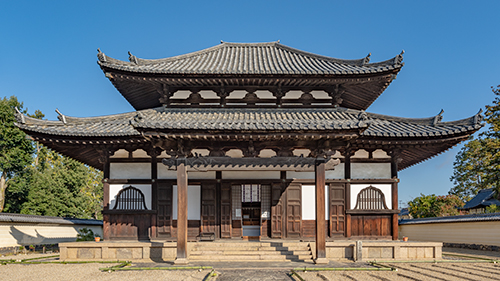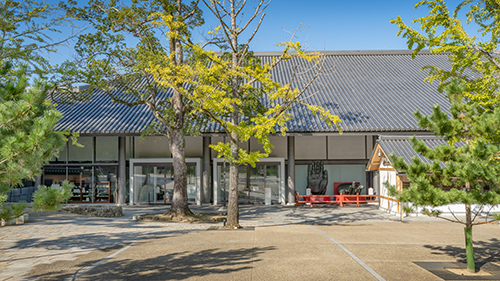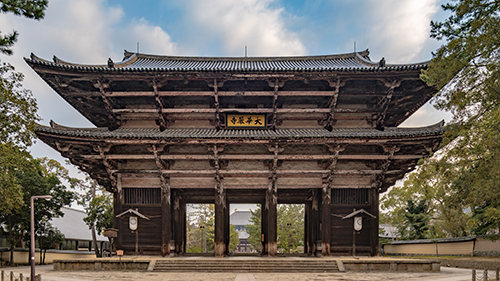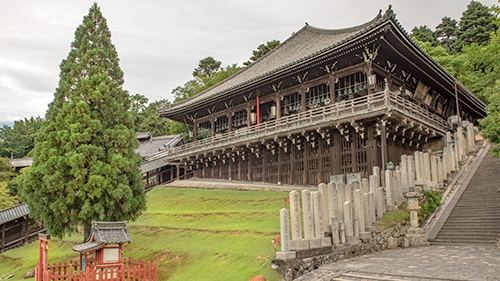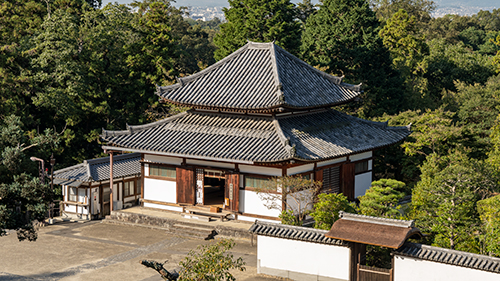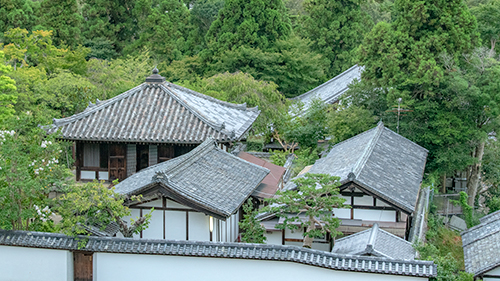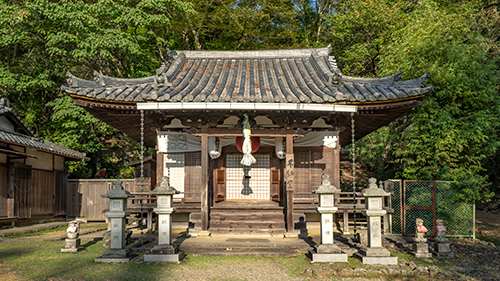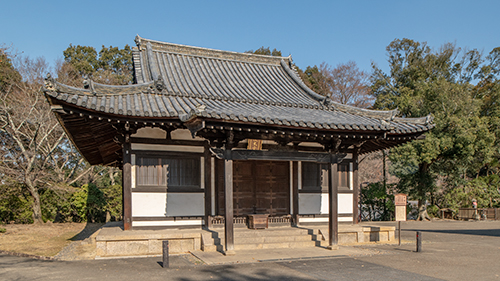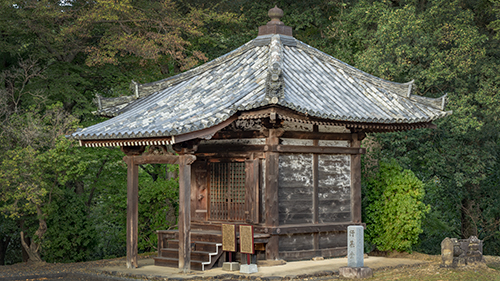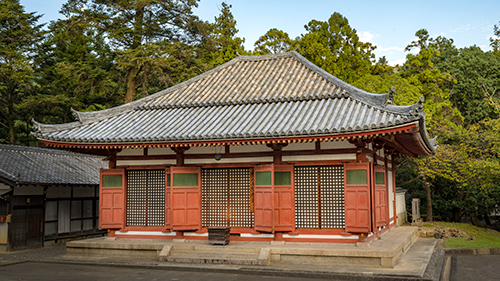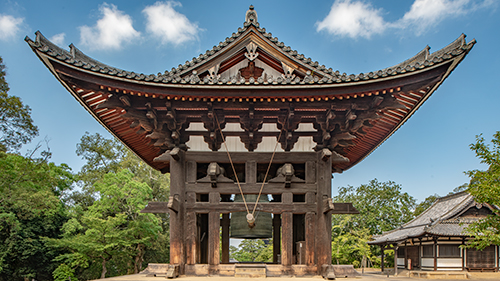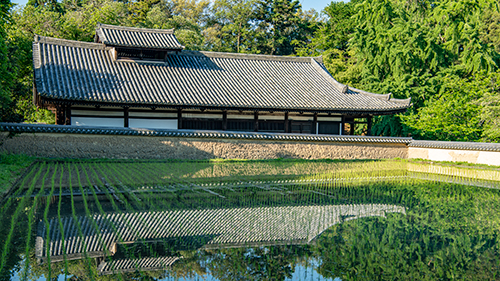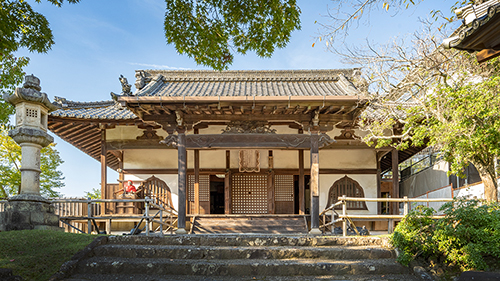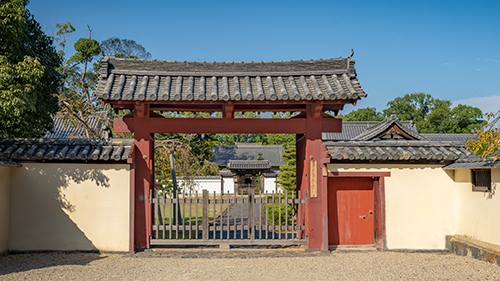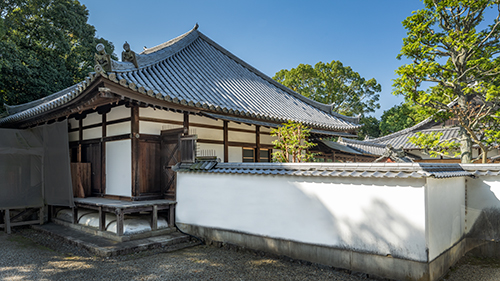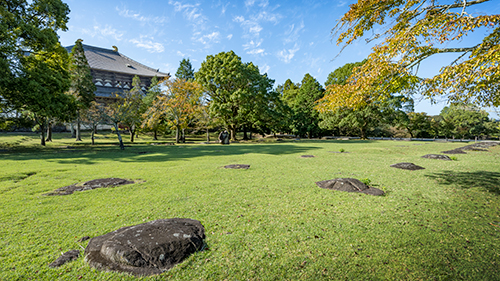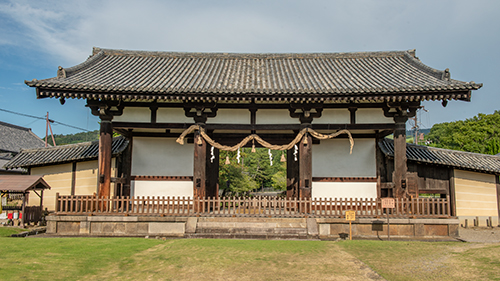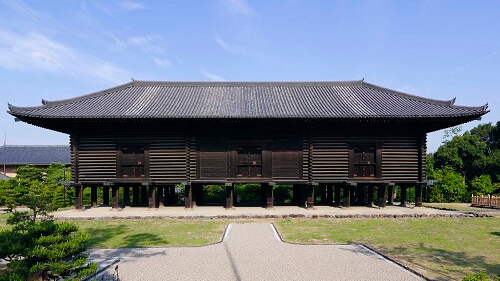Hokke-dō
(Sangatsu-dō)
Precincts Guide Map is here.
National Treasure / 8th century
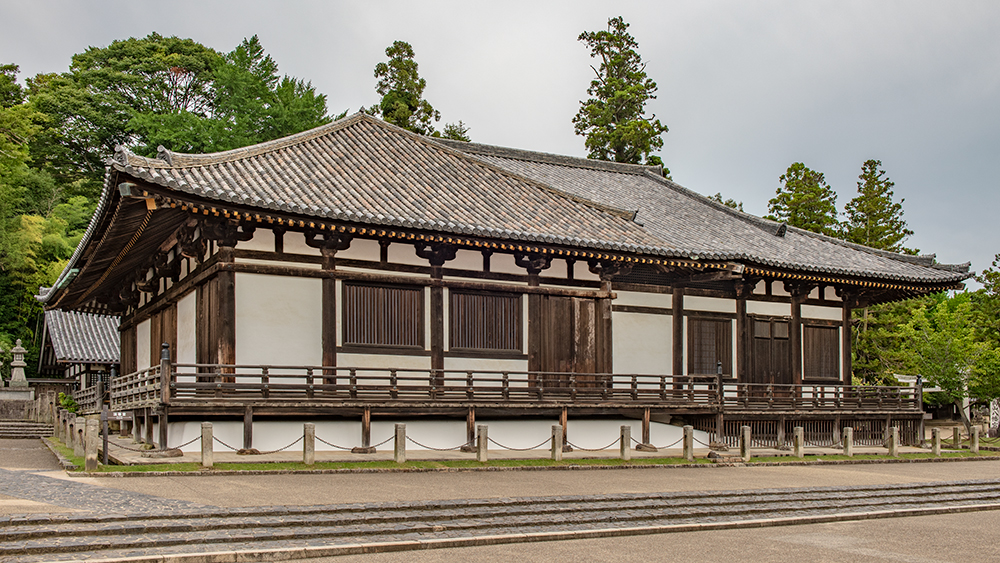
The Hokke-dō is the oldest structure at Tōdai-ji, said to have been built at earliest in 733. Because the main image is a statue of Fukūkensaku Kannon, in the past the hall was known as the Kensaku-dō, however, since the Hokke-e (Lotus Sutra) ceremony was held in the hall in the third month of every year, it later came to be known as the Hokke-dō (Lotus Hall). The hall is made up of two parts, a rear section known as the image hall (shōdō), and a front section known as the worship hall (raidō). Originally these were two independent parallel structures. The present worship hall was rebuilt by Chōgen in 1199 and is attached to the image hall. The Hokke-dō was an important element in the complex of Kinshō-ji, the predecessor of Tōdai-ji. It is said that the first lectures on Avatam.saka Sutra in Japan were held inside. The statues housed inside call to mind the splendors of the Nara period.
Attention
Photography and sketching and using a flashlight are prohibited in the Hall.
The Buddhist Statues of the Hokke-dō
Ten statues that date to the Nara period, all of which are registered as National Treasures, including the main image of devotion, Fukūkensaku Kannon, stand close together inside the Hokke-dō. The atmosphere created by this group of images invites a feeling of the solemnity of the “world of the Buddhas.” These works display the essence of the sculpture of the Tenpyō era: Fukūkensaku Kannon who agrees to save all suffering people wherever that task may lead; the two fear-inspiring Kongō Rikishi with their angry expressions and hair standing on end; and the Four Divine Kings, with varied expressions, each of whom protects the world of the Buddha in different ways; as well as the secret image of Shukongōjin (on view on the 16th of December), who wields a vajra and protects people from the enemies of the Buddha. The colors of this last image remain as bright as the time when it was made. At one time statues traditionally said to be of the bodhisattvas Nikkō and Gakkō flanked the main image. These, as well as the statues of Kichijōten and Benzaiten have been moved to the Tōdai-ji Museum to protect them from earthquakes.
During the restoration of the images and the altar of the Hokke-dō, which took place between 2010 and 2013, a number of new discoveries were made. Among the most important was the discovery of the outlines of octagonal pedestals, a small cabinet, and a sutra table on the lower level of the double octagonal pedestal of the main image (see photo). Specialists now believe that at the time the hall was first constructed seven statues—the Nikkō and Gakkō (most probably made as Bonten and Taishakuten), the Four Divine Kings now housed in the Kaidan-in, and the Shukongōjin, housed in a cabinet behind the main image, were all placed on the lower level of the double octagonal pedestal. It is also believed that the eight monumental images of Bonten and Taishakuten, the Four Divine Kings, and the two Kongō Rikishi were enshrined in the Hokke-dō after these images were in place.
Visitor Information
-
Opening Hours / Admission Fees
-
MAP
-
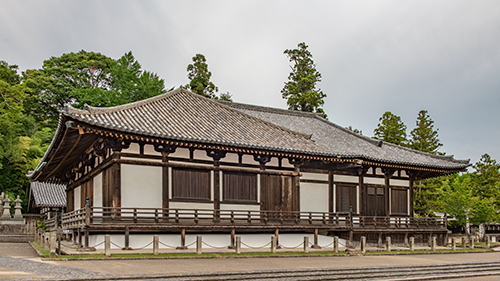
» Hokke-dō

